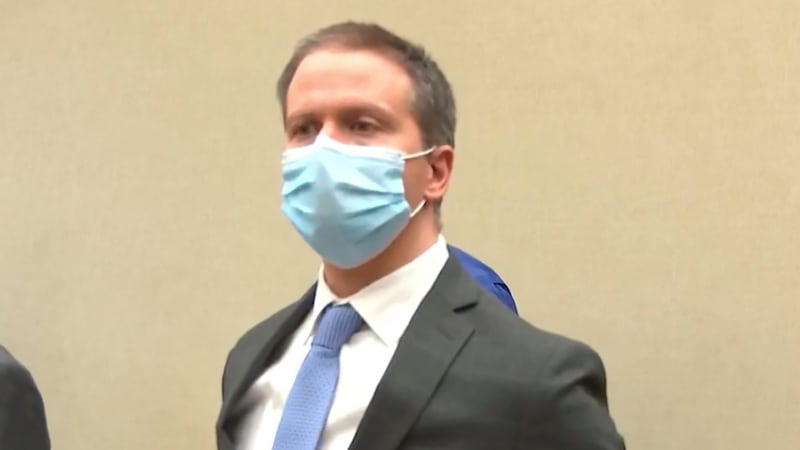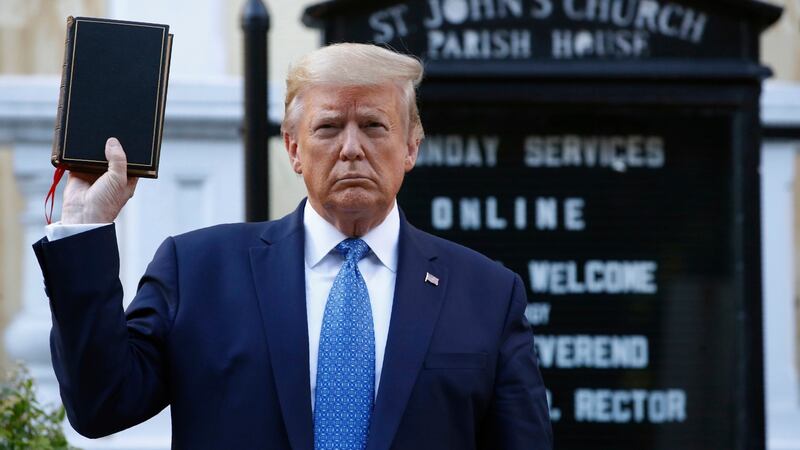It was Memorial Day last year – traditionally the day that marks the start of summer in America. But for George Floyd, May 25th, 2020 would be the final day of his life.
On that bank holiday Monday he walked into the Cup Foods convenience store in southern Minneapolis shortly before 8pm. A shop assistant called the police, as he believed Floyd was trying to use a fake $20 bill. Derek Chauvin and three other officers arrived at the scene. What unfolded in the next hour was the subject of the trial that concluded on Tuesday after more than three weeks, and the beginning of a saga that has gripped America.
Within 24 hours of his death, the video taken by a passerby of the killing of Floyd, an African-American man who took his last breath as a white police officer knelt on his neck for more than nine minutes, ricocheted around the nation and the world.
The import of what had been captured – a white police officer silently, almost casually, pressing his knee on the neck of a man pleading for his life and calling for his mother until he finally died – was immediate and profound.
Protests quickly erupted in Minneapolis and around the world.
Chauvin, and the three officers who witnessed the killing, were fired by the Minneapolis police force shortly after the video of the arrest went viral. Four days after the killing, Chauvin was arrested and charged with third-degree murder and manslaughter. The charge of second-degree murder was added later. The three other officers will be tried together in August.

Meanwhile, the repercussions of the George Floyd killing were erupting. Minnesota's governor Tim Walz activated the Minnesota national guard. Protesters attacked the third precinct police station in the city, where Chauvin was based. The protests quickly spread across the country.
Coast to coast
By the weekend after George Floyd’s death, demonstrations were taking place from coast to coast. In Atlanta, where the mayor declared a curfew, hundreds of protesters clashed with police for several consecutive nights. From New York, to Chicago, to Portland, Black Lives Matter demonstrators took to the streets – distressed by what had unfolded in Minneapolis.
But it was the events in Washington DC that became the centrepiece of the national outpouring of anger about America’s history of racial injustice, pushing issues of race relations and policing to the forefront of American politics just months before the US presidential election.

Shortly after the killing of Floyd and the protests that ensued, president Donald Trump was widely criticised for referring to "thugs" who were protesting in Minneapolis. "When the looting starts, the shooting starts," he said, a comment he later tried to retract.
But two days later he invoked national outrage by directing law enforcement personnel to disperse protesters who had come to demonstrate in Lafayette Square outside the White House. As demonstrators were attacked with tear gas, Trump and some of his officials walked from the White House to St John's Church in Lafayette Square to pose with a Bible in a highly staged move. Religious leaders were among those who lambasted the president for the move.

Throughout the summer protests continued in different forms. Washington remained under tight security. Lafayette Square was renamed Black Lives Matter plaza by the city's mayor, Muriel Bowser, who had clashed with law enforcement officials about the decision to deploy troops to quell the peaceful protests.
Questions about institutional racism in America's law enforcement system and the excessive use of force by police became a live election issue, as Joe Biden pledged to address the demands of Americans for racial equality if elected to the White House.
As the winter came and went, in early March potential jurors were assessed for the Chauvin trial, and Minneapolis prepared for one of the most consequential trials in American history.
The defence team requested the judge to move the trial, arguing that the decision by the city of Minneapolis to pay a multimillion-dollar settlement to the family of George Floyd could taint the views of the jury. But the request was overruled.
The trial
On March 29th, the trial began, with a jury of seven women, five men and two alternate jury members.
In light of the coronavirus pandemic, attendance at the court was extremely limited – family members of George Floyd took turns to sit at the spectator seat reserved for each side. The seat allocated to the Chauvin side was mostly unoccupied.

Judge Peter Cahill ruled that the daily proceedings could be televised live, with one TV channel allowed to provide coverage to other networks.
Outside the heavily-fortified court in downtown Minneapolis, jurors were brought into the building each day, hidden under tight security, until Monday evening when they were sent to a downtown hotel to consider the verdict.
A little over midway through the trial, the city was plunged into further disarray when a 20-year-old black man, Daunte Wright, was shot and killed by a white police officer in Brooklyn Center, after he was pulled over for a traffic violation. Fresh protests erupted.
A few miles south of the Hennepin County Courthouse, the junction between Chicago Avenue and 38th Street where George Floyd lost his life continued to function as a shrine of sorts. Photographs, flowers and momentoes decorated the spot where he died under the knee of Derek Chauvin.
As the trial of the former police officer finally concluded on Tuesday, the memory of George Floyd was everywhere in Minneapolis – his name sketched on street corners, on handwritten signs hung in windows and across some of the many boarded-up buildings in the city. For Minneapolis, the trial may be over but the healing process has only just begun.









